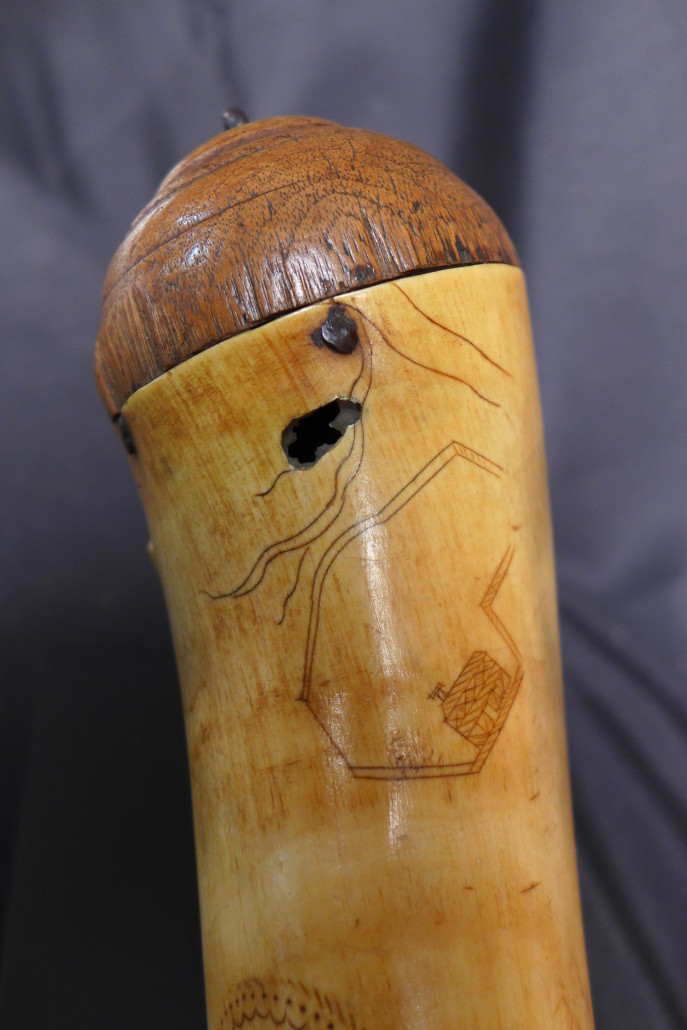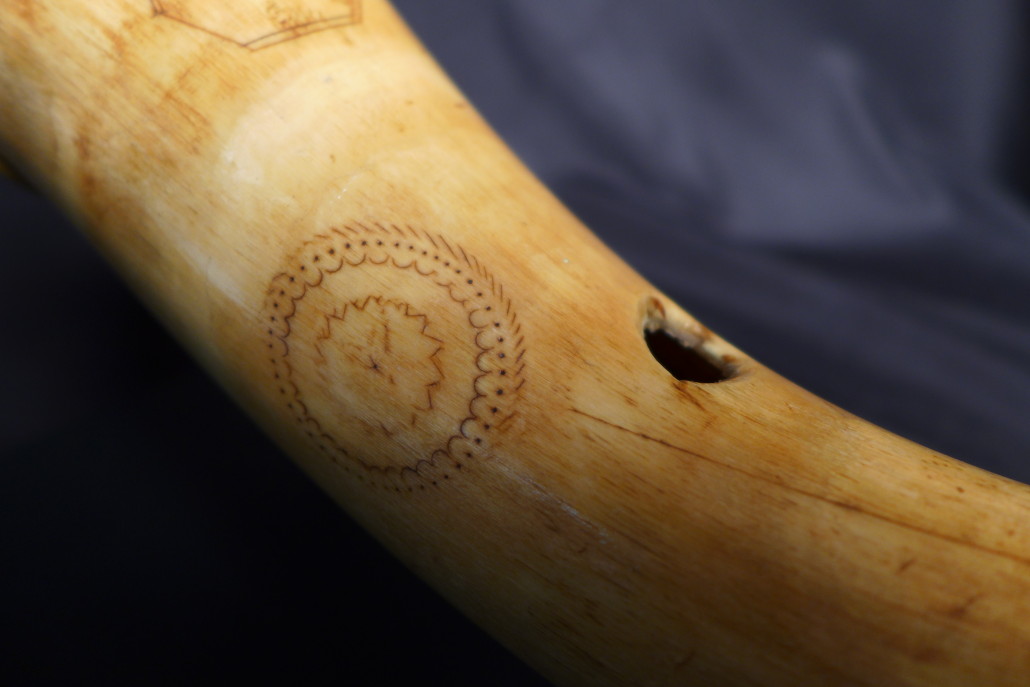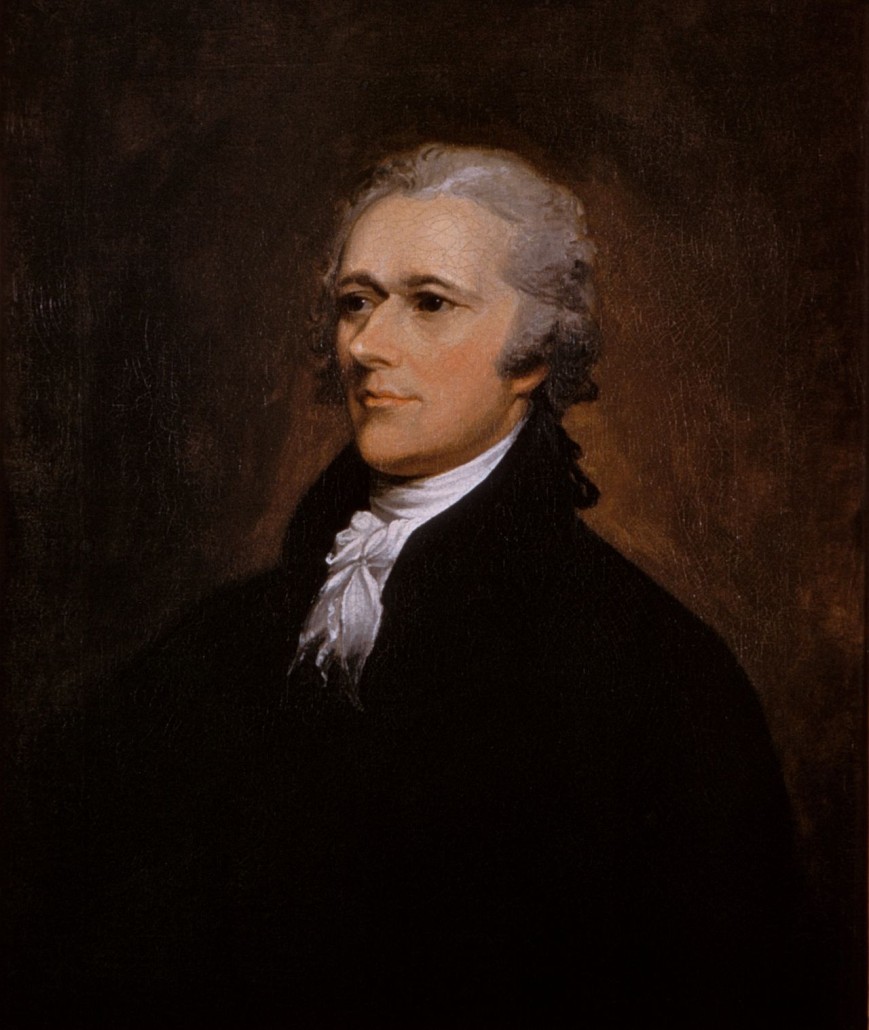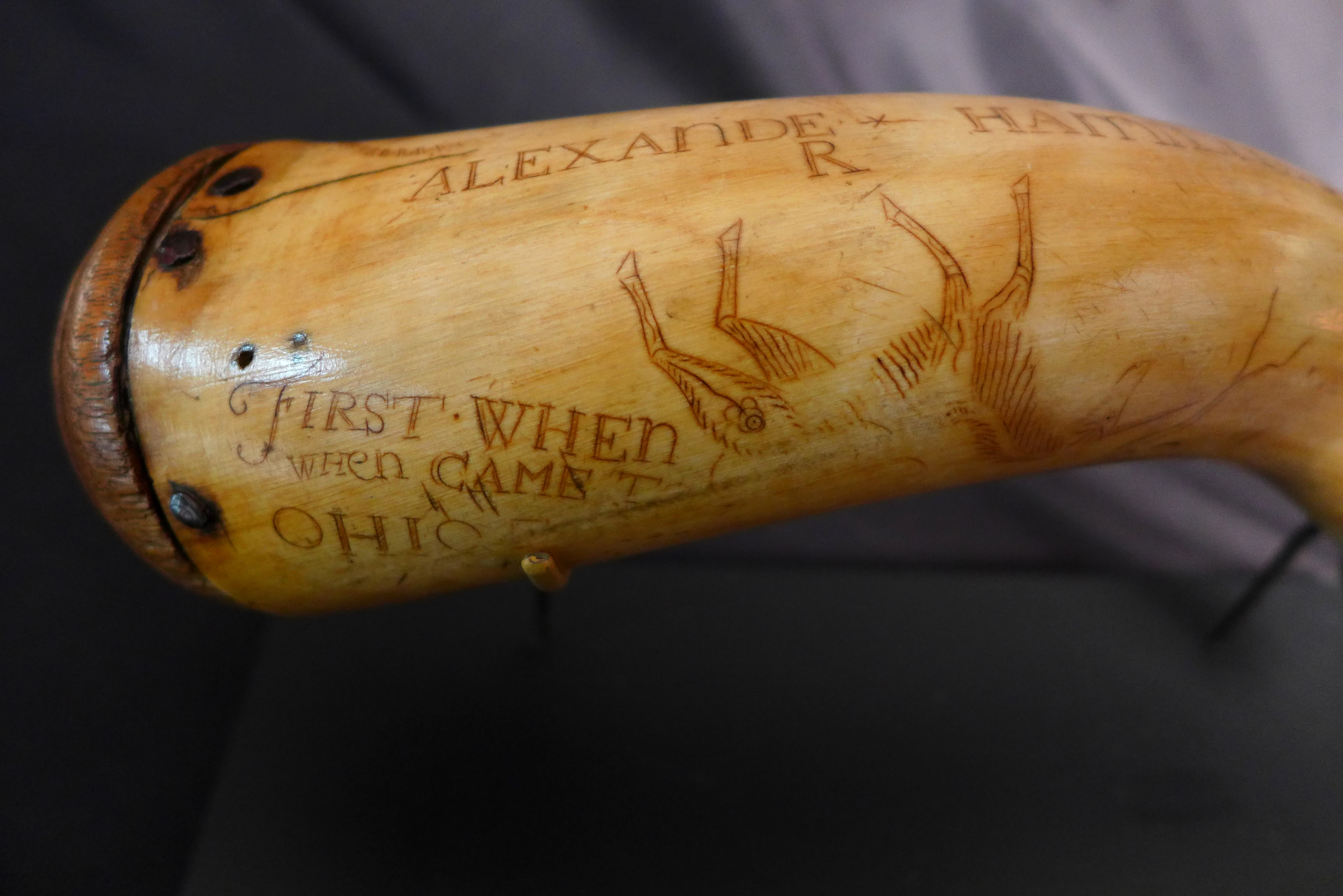
CLOSTER, N.J. – Thanks in no small way to a hit Broadway musical and a New-York Historical Society display of famous dueling pistols, the life of one of America’s most influential Founding Fathers, Alexander Hamilton, is being examined with a closer focus.
Hamilton’s monumental achievements, including the establishment of the US Mint and national banking system, are well documented within the fabric of American history. What is less commonly known, however, is that after Hamilton’s death, his entire estate was liquidated to settle his debts, leaving very little by which to remember the great patriot except the pistols from the fateful Hamilton-Burr duel of 1804, which ended his life at age 49.
The fact that the whereabouts of Hamilton’s possessions are forever lost to posterity has fueled intense anticipation over an object to be auctioned in New Jersey on January 11th. It is a distinctively engraved powder horn that was Hamilton’s very own, and it comes with a raft of supportive documentation, including a detailed letter from direct descendant Douglas Hamilton, who unequivocally states that the horn was his great great great great great grandfather’s property.
“It’s one of the most amazing pieces of history I’ve ever touched,” said Stephen D’Atri, owner of Sterling Associates, the company chosen to auction the relic. “This is not a household decoration or an award. This is a very personal item that Hamilton would have kept close and viewed on a daily basis. He engraved it with inspirational words and symbols that were personally meaningful to him.”

D’Atri likens the powder horn to “a traveling mission statement. Hamilton was a follower of the writings of Machiavelli and Sir Francis Bacon. The carved symbols, some of which referred to the two men’s doctrines, were what motivated him in life, so it’s reasonable to assume that Hamilton carried the powder horn with him everywhere he went. Remember, these were not times when there were Tony Robbins videos or Dale Carnegie books.”
Among the images on the horn are:
- A large unicorn, symbolizing fortune and also Scotland, enhanced with a cinquefoil (five-petal flower) from the Hamilton coat-of-arms
- An estate with fenced-in land and streams, symbolizing wealth and means
- A roundel of fasces (sticks tied with rope), an Ancient Roman token for civil authority
- A roundel with cinquefoil, representing honor and a nod to Hamilton’s noble Scottish roots

It is also boldly carved “Alexander Hamilton 1773” and “First When When [sic.] Came To Ohio,” a phrase made in reference to American settlement.
“Based on the words and art Hamilton carved on the horn, there can be no question that he was highly principled and driven to succeed,” said D’Atri.
Many successive generations of Hamilton descendants believed that all of their famous ancestor’s belongings had been disseminated to parts unknown at the 1804 estate auction. But the powder horn, which turned up in the 1960s in a long-forgotten trunk stored in a New Jersey residence, rekindled historians’ hopes that a significant personal possession of Hamilton’s – other than his dueling gun – had survived. [The firearm is currently in the possession of JP Morgan Chase Historical Collection.]
Since its discovery in the 1960s, the powder horn has had two custodians. Its present owner, who consigned it to the January 11 auction, has left no stone unturned in putting together the pieces that validate Hamilton’s ownership.
The horn has been forensically tested for age and composition, and its carvings and handwriting style analyzed, by acknowledged top experts in their respective fields. All have concluded that the powder horn was, indeed, the personal property of Alexander Hamilton and its inscriptions made by his hand.

Hamilton’s life was a classic American success story, until his tragic death. Born out of wedlock in the British Virgin Islands of St Kitts and Nevis, and orphaned around the age of 10, Hamilton was taken under the wing of wealthy benefactors who ensured he received a first-rate education. In 1773, with little money in his pocket, he traveled by ship to colonial New York to seek his fortune.
“From virtually nothing, he achieved every goal he ever set for himself. He graduated from King’s College [now Columbia University], and in addition to serving as Secretary of the Treasury and composing The Federalist Papers, he was a major general in the US Army and aide-de-camp to George Washington. Hamilton was a major architect of the US monetary system, established the Bank of New York and also founded the New York Post newspaper,” said D’Atri. “He was a man of vision and accomplishment, and it’s unimaginable that, other than ephemera, so little has survived to document his extraordinary life.”

The Alexander Hamilton Powder Horn is the centerpiece and closing lot of Sterling Associates’ Jan. 11, 2016 Historical Americana Auction. All bidding will be conducted remotely, with Internet live bidding through LiveAuctioneers, but the company is a brick-and-mortar establishment where anyone can inspect the goods.
The 50-lot auction will commence at 5 p.m. Eastern Time. For additional information on any item in the auction, call 201-768-1140 or e-mail info@antiquenj.com.




